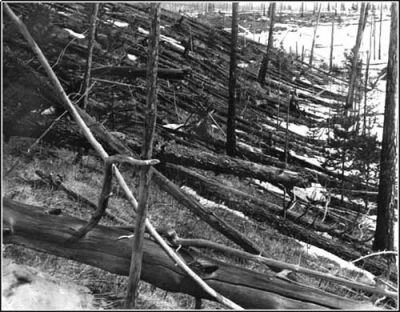On June 30, 1908, a massive explosion occurred in Eastern Siberia. Although the location of the explosion was in a remote and uninhabited area, near the "Podakmaniye Tunguska" river, the explosion was felt hundreds of kilometers away, and seismic and atmospheric changes were recorded in different parts of the world
On June 30, 1908, i.e. 99 years and weeks ago, a massive explosion occurred in Eastern Siberia. Although the location of the explosion was in a remote and uninhabited area, near the river "Podakmaniye Tunguska", the explosion was felt hundreds of kilometers away, and seismic and atmospheric changes were recorded in different parts of the world.

The first scientific expedition whose purpose was to inspect the explosion area was an expedition led by Leonid Kulik, in the late 2000s. Even then, the main theory was that it was a small celestial object (meteorite or comet) that collided with the Earth. But to her astonishment, the expedition found no trace of the crater. However, there were other evidences of a devastating event - in an area of more than 1500 square kilometers (for comparison, the area of Gush Dan is about XNUMX square kilometers) tens of millions of trees were felled, in a circular fashion when they were directed outward from the center. At "Ground Zero" itself stood burnt trees without branches.
From these findings, the scientists concluded that the explosion occurred at a height of several kilometers above the earth's surface, and therefore it was not an ordinary case of a meteor impact. Apparently it was a meteorite or comet with a suitable chemical composition, which caused a violent explosion, and the vaporization of the material itself at a height of several kilometers. That explained the felled trees very well. The intensity of the explosion was very large, and the various estimates range from 10 to 40 megatons. If the event had occurred over a populated area, tremendous damage would have been caused, and therefore the Tunguska event is often used as an example of the destructive capacity of a meteorite impact on the Earth.
However, several mysteries remain regarding Tunguska - what was the exact chemical composition of the impacting body, whether there were any unknown craters and more. There are also alternative explanations for the event. Among them: an explosion of a methane cloud, created due to volcanic activity in the area, an atmospheric explosion and an explosion caused by powerful electrical processes in the atmosphere.
Even today the famous event from Tunguska is studied all over the world. A few days ago, an Italian research group published an article, according to which it is possible that one of the lakes in the area was formed due to a fragment from the meteorite. The research expedition is supposed to go there in the summer of 2008, close to the 100th anniversary of the event.
Archive photos of the 20th century from the site-museum dedicated to Tunguska.
to the space destination site of Semyon Semyonov

One response
Is there anything new considering the years that have passed?
Thanks